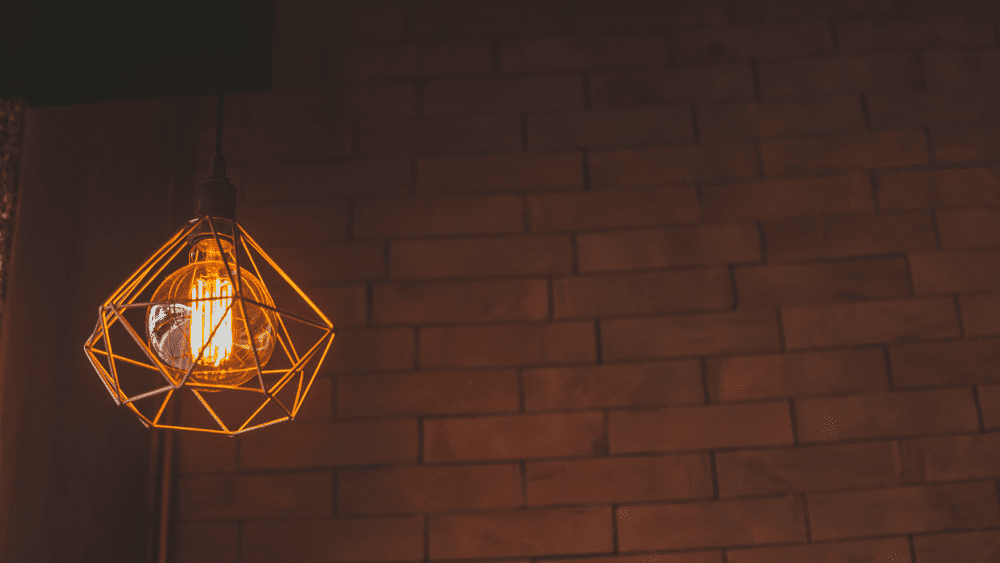
Statement lighting is big this year, and with houses increasingly growing in square footage, new homes have ample room to feature stunning, eye-catching light fixtures. And with the increased popularity of this kind of lighting, you can find the perfect fixture for every budget.
Before you start shopping, it’s important to keep a few design principles in mind. The lighting you choose needs to fit in the room, both in terms of space and style, as well as serve in its primary function: lighting. We break down all of the design elements you’ll need to consider before buying your sculptural statement lights.
Light Placement
Of course, location is key! There are plenty of placement factors to consider when choosing statement lighting. It is possible that there is a spot in a room that is just begging for an amazing chandelier. A common location for this kind of lighting is over a dining table, but you certainly don’t have to limit yourself to common arrangements. Statement lighting could also jut out from a wall, stand vertically from the floor, or be an arrangement of smaller lights that work in concert.
Here are several aspects of placement to keep in mind:
- Balance. As with any interior design and lighting, whatever statement lighting you choose should fit with the overall design, but add a bit of oomph. For example, if you have a largely monochrome interior, statement lighting is where you could add a burst of color. If a room is predominantly full of hard, straight lines, sculptural lighting can add some curves to balance it out. If a room has a lot of wood pieces, a metal or fabric light fixture can add just the right amount of contrast.
- Breathing room. As with any artwork, sculptural lighting requires breathing room to really make a statement. Choose a piece that is in proportion to the room and the surrounding furniture. Even though you want the lighting to catch the eye, you don’t want it to overwhelm everything else in the room.
- Backgrounds. Just as you want to consider the space around your statement lighting, be aware of what is on the nearby walls and what appears in the same line of vision as the light fixture. In some cases, the light will be up high, so the background and other artwork won’t be an issue, but in other cases, lighting will be much lower, as with floor lamps and lighting for dining spaces. As mentioned in Balance, you’ll want to ensure that the statement lighting does not clash with the background or block the view of artwork behind it. Home and lifestyle columnist Marni Jameson [link: http://www.marnijameson.com]advises, “For a sculptural object’s silhouette to be appreciated, it needs to be seen against a plain field.” Busy wallpaper or other patterns are serious competition for statement lighting.
- Traffic. If you have a light hanging as low as a dining table light, but there is no table underneath, everyone in your household (and guests) will be hitting their heads on it. If you have a floor lamp in a high traffic area, chances are it will get knocked over or get very dirty (this is especially important to remember when it comes to fabric lamps). It’s important to consider how a space will be used when arranging the decor. Better Homes & Gardens [ok to include? link: https://www.bhg.com/decorating/home-accessories/tips/decorative-lighting/?]offers these three rules of thumb:
- The bottom of a light fixture hanging from an 8-foot ceiling should hang 27-30 inches above a dining table. For higher ceilings, add 3 inches for each additional foot.
- Select a hanging fixture no wider than the width of a table minus 12 inches.
- Hang pendant lights 35-40 inches above kitchen work surfaces.
How Many Lights?
Keep in mind that you can add design flair with all kinds of lamps and not every lamp has to make a big statement. In fact, the sculptural lighting you add will make more of a statement if it isn’t competing with other sculptures for attention. In this case, less is definitely more. Beverly Hills designer Christopher Grubb [link: http://christophergrubb.com/]explains it this way: “I often tell my clients, not everything can say, ‘look at me, look at me.’ You want to avoid too much visual competition.” Statement lighting can generally be limited to common areas and to larger rooms. A long, narrow space — like a hallway or galley kitchen — can benefit from a series of lights that function as a single statement piece.
Form or Function?
When it comes to sculptural lighting, form is essential. But function is no less important! When shopping for statement lighting, it also has to illuminate the space to suit your needs. Adjustable dimmer lights are a great option but not always available. Always check the allowed wattage of a lighting fixture. Some lights do not have replaceable bulbs, so that is also something to be aware of before investing. If a light is at eye-level, make sure it doesn’t shine directly into anyone’s eyes. Kitchens and dining rooms need brighter lighting that won’t cast shadows.
If you scour all of your local and internet stores and still can’t find the perfect sculptural lighting, remember that you can directly commission a work from an artist you love. This can be costly, but you’ll have an amazing work of art that no one else will have. And what a statement that would make!

For the last 16 years, Rachel Kinbar has been a writer of articles, blog posts, white papers, essays, infographics, web copy, sales copy, scripts, poetry, lyrics, and more. She has keen research skills that she applies to a wide variety of topics, and she especially loves topics related to design, history, and sustainable living.

 How to Choose Window Treatments
How to Choose Window Treatments